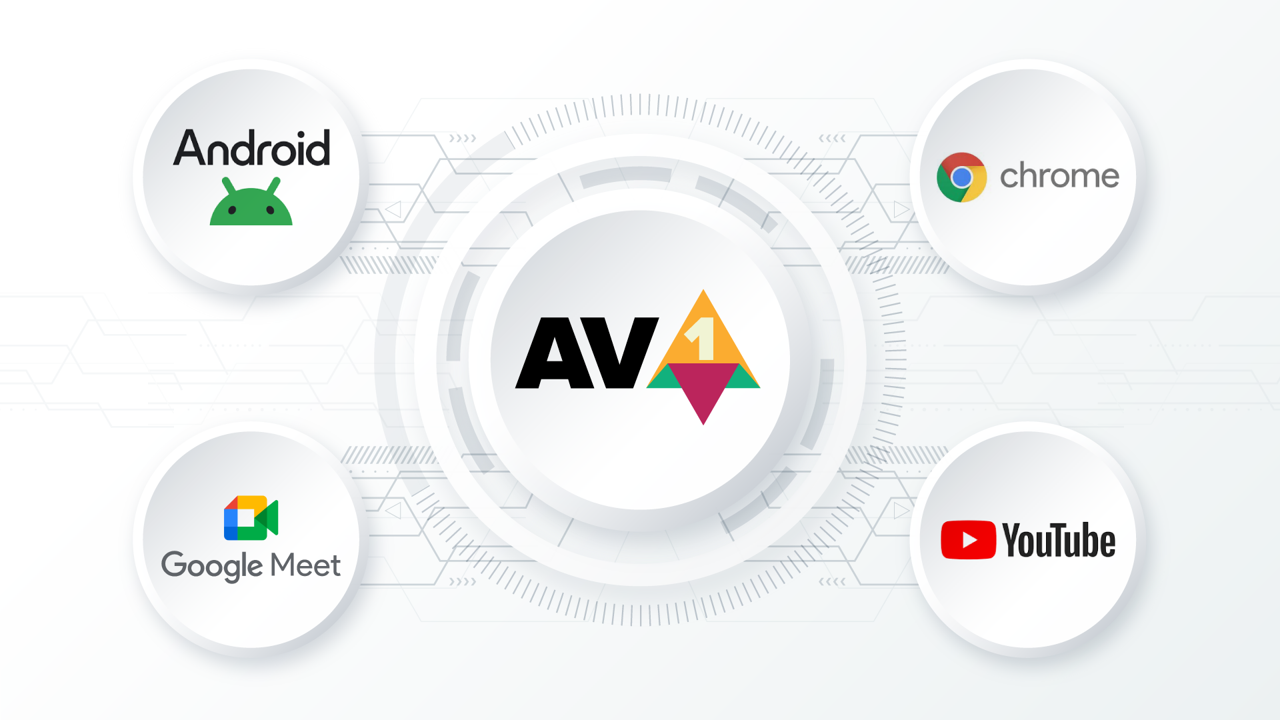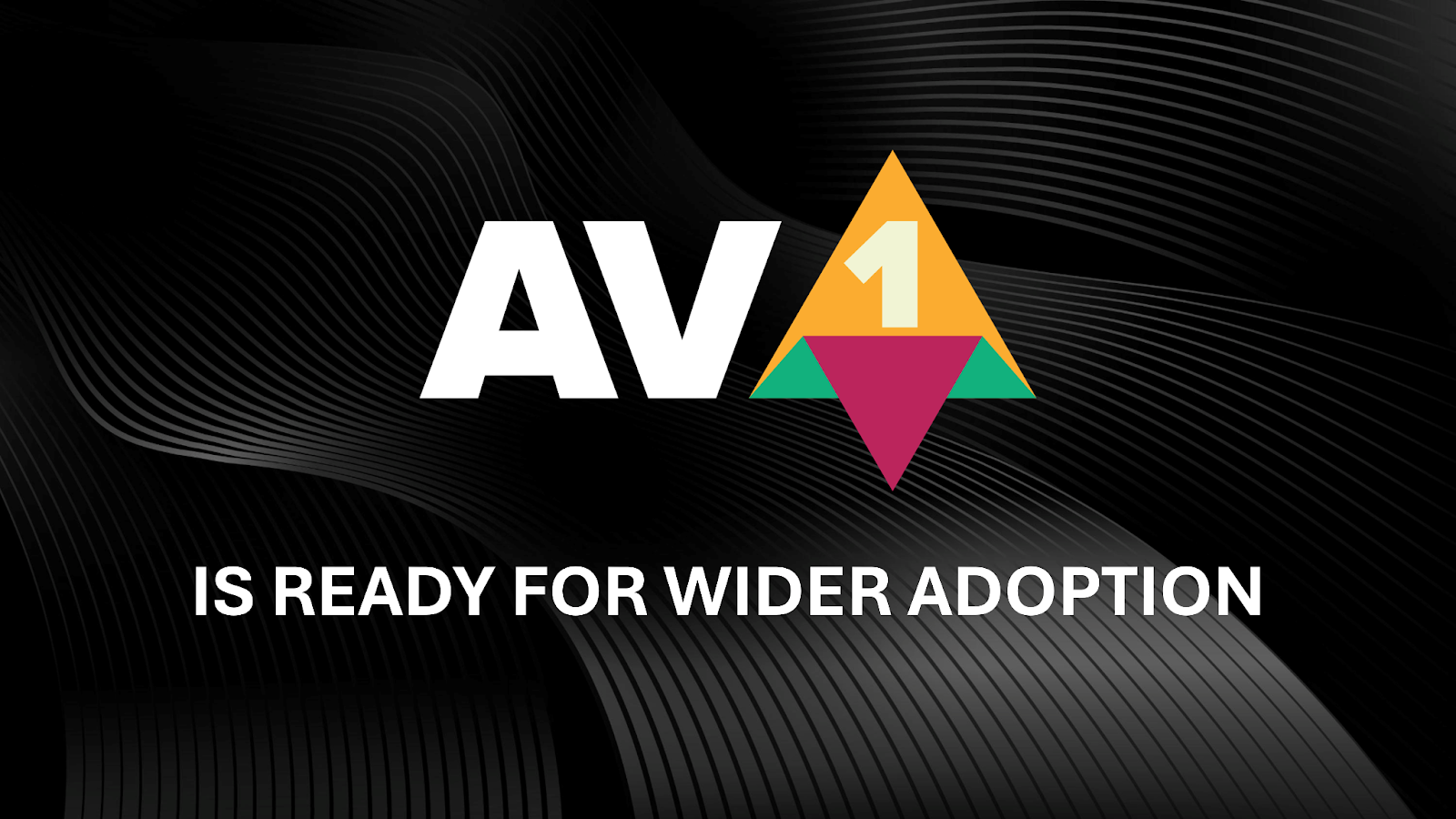How Google Uses AV1 to Drive Innovation
Google is famous for its array of user-friendly products and services, and AV1 makes video experiences seamless and efficient in almost all of them. From YouTube and Chrome to Android and Google Meet, AV1 is delivering quality and cost savings on bandwidth and large-scale storage. Matt Frost, Director of Product Management at Google, spoke with us about why Google was an early adopter of the AV1 codec.

The Key to Product Innovation
Google started using AV1 early, in particular as a key technology at YouTube. “AV1’s advanced technology allows Google to innovate with 4K, 8K, and high frame rate videos for users with premium devices, while also delivering high-resolution content over unreliable networks to lower-end mobile device users,” said Frost.
In Google Meet, AV1 enhances reliability for large multi-party conferencing, ensuring users enjoy smooth, higher-resolution video, even in challenging network conditions.
Both the Android platform and Chrome support AV1 natively, benefiting mobile and TV users, video services from companies such as Netflix and Meta, and powering emerging experiences such as game streaming and VR.
“AV1 is one of the powerful media tools in our toolbox which allows developers to produce more immersive media experiences,” commented Frost.
AV1 also supports high dynamic range (HDR) video, which creates a more realistic and immersive viewing experience. YouTube has already streamed millions of hours of HDR video using AV1.

The Evolution of AV1 adoption
Big companies have paved the way for AV1 adoption, making it easier for smaller companies to follow. Larger companies have an incentive to move quickly: they have high costs for bandwidth and storage, and they have the technical staff and resources to test, provision, and deploy a new codec. This early adoption by large companies helps move the industry forward, proving AV1 and helping establish the AV1 ecosystem for the next wave of adopters.
“Once the rest of the ecosystem knows that the technology has been de-risked, they can go to an online repository, download the software and developer's manual, and start working with it,” said Frost.

How dav1d is Changing the Rate of Adoption of AV1 for Low-end devices
Android’s recently announced support of dav1d, a software AV1 decoder created by VideoLAN, should increase the use of AV1 on mobile devices.
While many late-model TVs and premium phones already have dedicated hardware to decode AV1, many older or non-premium devices do not.
This is where dav1d comes in. “Dav1d is designed to run efficiently on the CPUs of most mobile phones, allowing them to decode AV1. This means that services such as YouTube, Facebook, and Netflix can now offer AV1 playback on devices without dedicated hardware,” said Frost.
The Next Step for AV1 adoption
While dav1d opens up more use cases, Frost thinks that the adoption of dedicated AV1 hardware decoders will continue. "Typically, chip makers add new features, like dedicated video decoders, to their more expensive products first. Over time, those features trickle down to their less expensive chips that power lower-cost devices.”
Beyond that, he sees the continued adoption of AV1 by smaller and smaller companies.
How AV1 Saves on costs
Services like Vimeo, YouTube, and Facebook face two main costs: the cost of sending video data to users, and the cost of storing the videos in their libraries. Ideally, service providers would be able to store and send videos using a single, highly efficient format, such as AV1. However, with a vast array of devices in use worldwide, spanning various generations and supporting different video standards, most providers find it necessary to store multiple formats to ensure compatibility.
Frost noted, "As more devices capable of handling advanced codecs like AV1 become available, we see a growing opportunity to save on data transmission costs, and the prospect of a video service streamlining its storage by reducing the number of formats it has to maintain becomes increasingly realistic."
The Invisible Tech that Makes Video Experiences better
A good codec like AV1 should operate seamlessly in the background, powering video without user intervention.
In the early 2000s, video calls were plagued by echoes and pixelation, but over time technology improved these issues.
“Now, video conferencing is mostly seamless, with less lag, quicker start times, and more participants per call. Continuous development and AV1 aim to refine these experiences further. The goal is consistent, unnoticed upgrades that lead to better overall performance,” said Frost.
Why Being an AOMedia Member is Important to Google
Google has been involved in open-source video for 14 years, anticipating the need to add video codecs into Chrome.
Frost explains, “Our online experiences are powered by platforms and services that are provided for free — from browsers, to open-source operating systems, to social networking, VOD, and video conferencing applications. For this to work, we must make sure that there are powerful media technologies available, like AV1, that developers can use to create delightful products and experiences.”
There are other reasons for Google to participate in AOMedia. As a provider of many media-centric platforms and services, Google wants to accelerate the improvement of underlying media technologies. Working with like-minded collaborators at AOMedia, Google can ensure that innovation and advancement continue for media technologies.
Finally, Google firmly believes in the key role that open-source technologies played in shaping the internet's evolution. The web's triumph owes much to open and freely implementable core technologies like HTML, HTTP, and TCP/IP. Media is integral to today's web experience, and it is a core component of the modern web experience. Google is excited to be part of the alliance that is ensuring that cutting-edge media technologies, such as AV1, and new technologies which AOMedia is currently developing, are also open and freely implementable and accessible by all.
